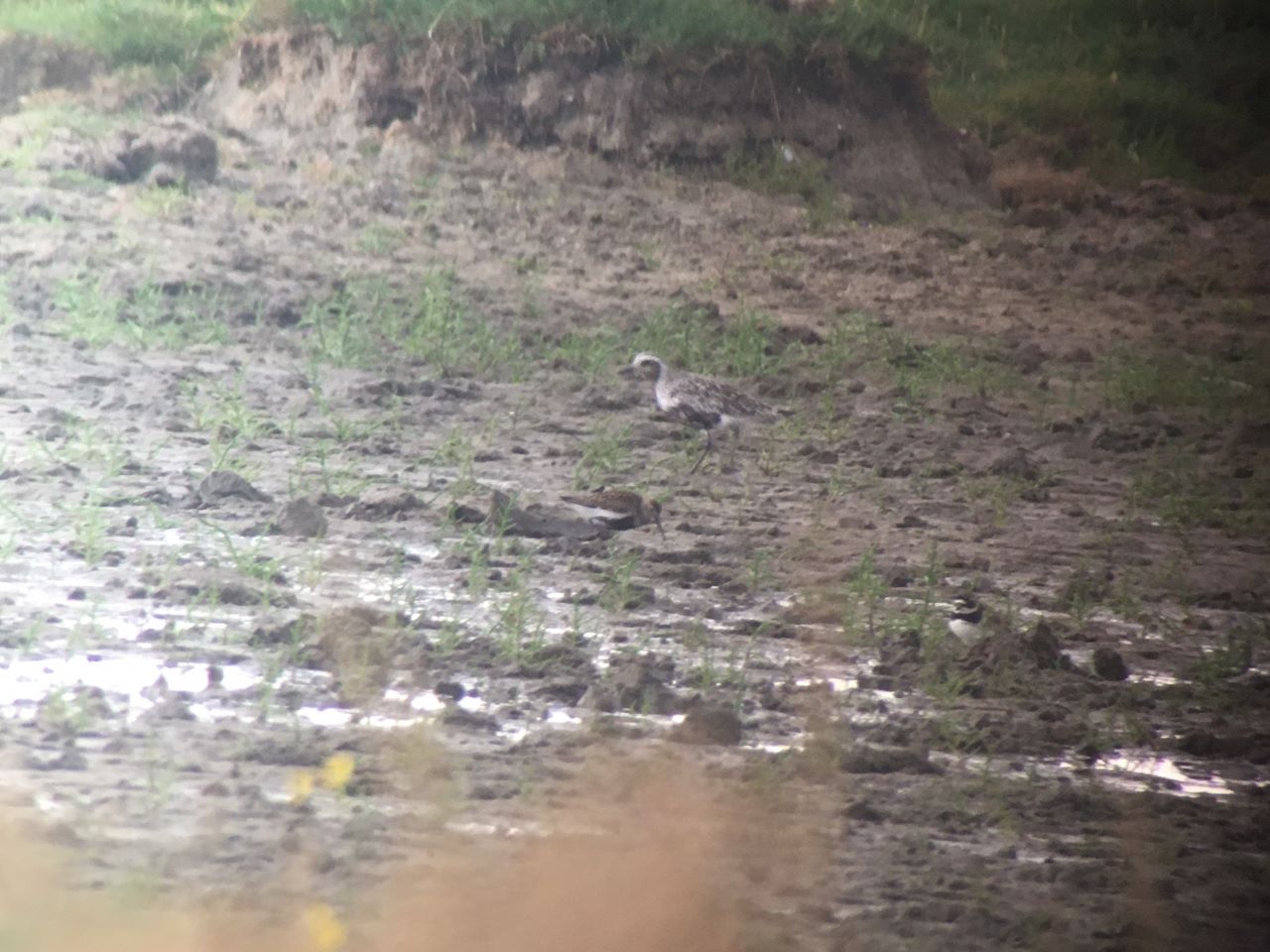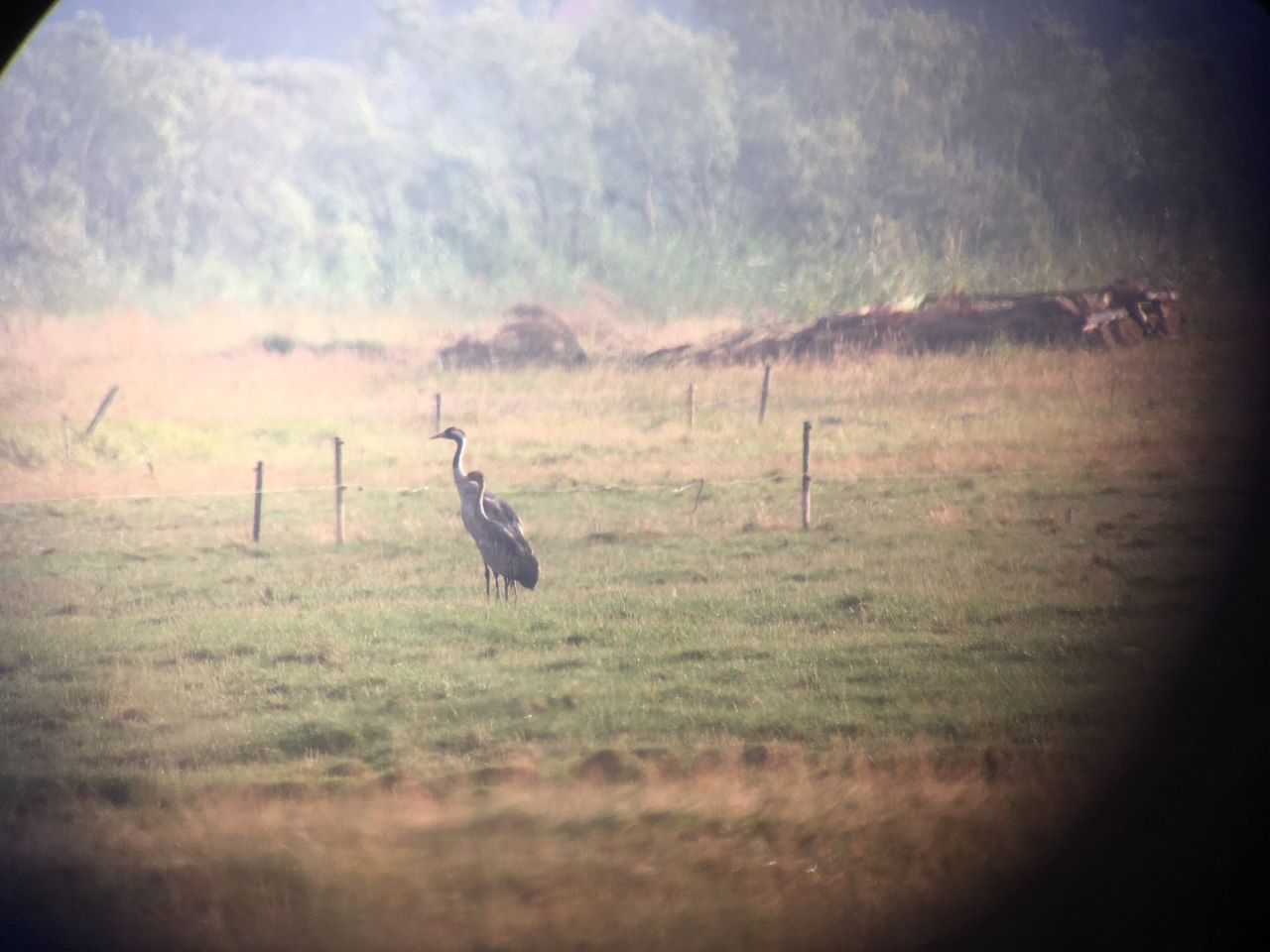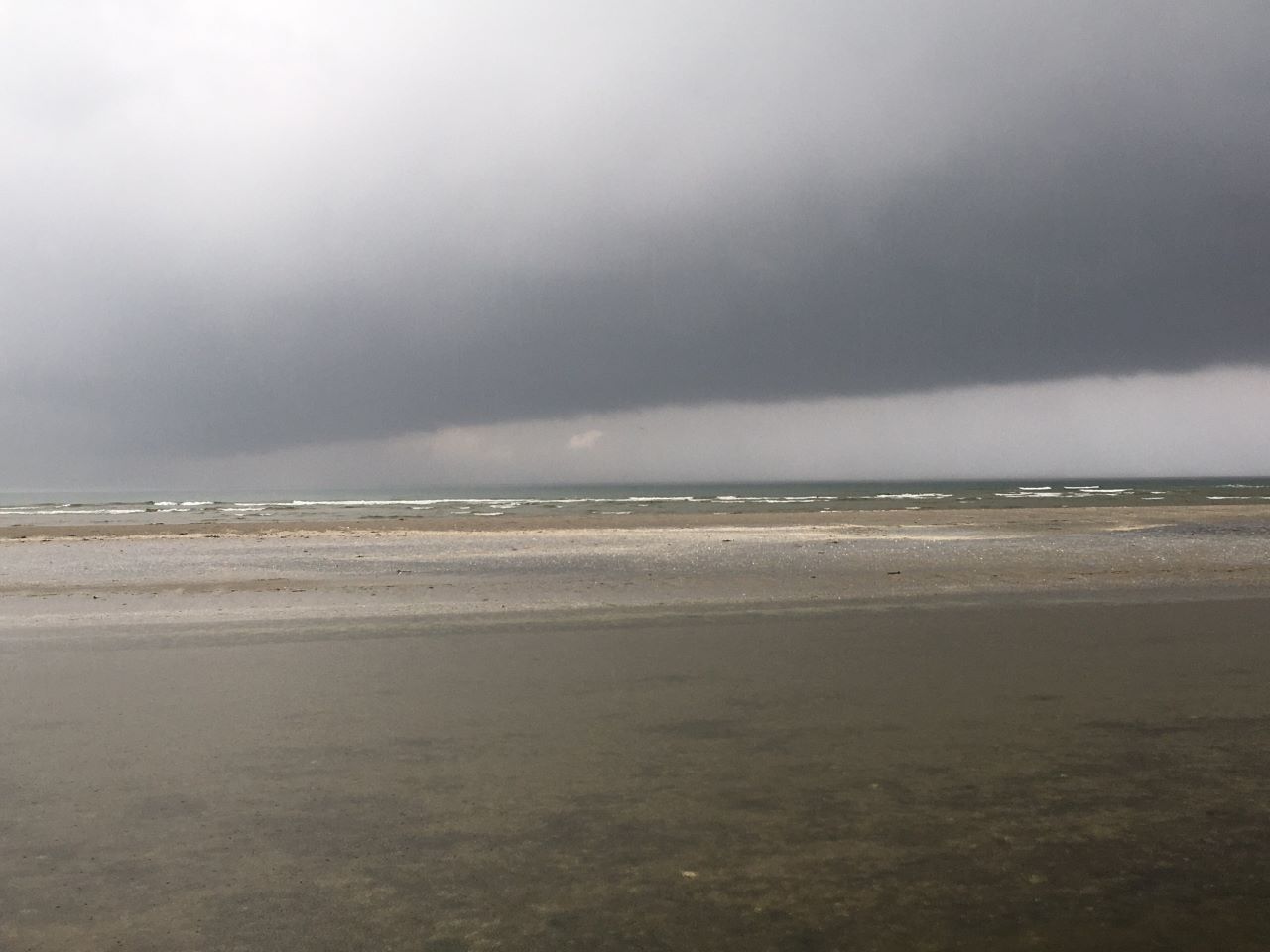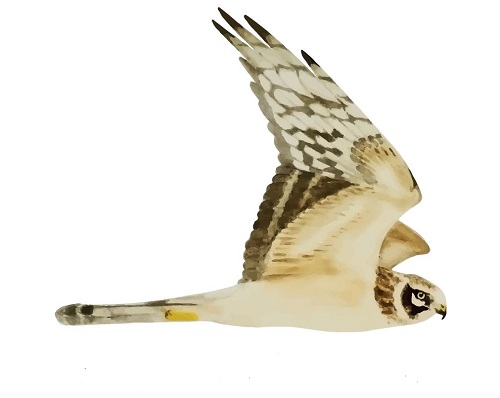Her på Skagen Fuglestations blog bringes korte nyheder i dagbogsformat om hændelser på fuglestationen.
Rain on the beach
The beach around here is always nice for bird watching, however, on days with so-called ‘bad’ weather it may be especially so. You never know which rarity a storm might wash to shore. So when it is stormy and rainy it is always good to go take a look at the beach. It is not quite as peasant, of course, as doing a bird count in the sunshine.
This morning started just after midnight for Max and me, since we had decided to try our luck with night catching. Rain at night should have made it possible, however, the forecasted rain didn’t come at the time it was forecasted, so visibility was too good and birds could get away from us. It was a good chance to get used to using the thermal binoculars, however.
After one hour of sleep, I got up again to check the weather forecast and contrary to what was expected last night, in the morning it seemed like most of the rain would pass just south of us. So I told Nathan an Rita that it was okay to try and do the count and myself went to open some nets in Grenen (not all of them since it was unclear if it was going to rain or not and I needed to be prepared and able to close quickly if necessary. That’s also what I did after an hour, as it already started to rain.
The forecast said it would stop after two hours, so I took my chance to check out the beach and saw a small flock of sanderlings next to a lot of roosting gulls and terns. When the rain stopped, I went to open the nets again because not only on shore but also inland a storm could have brought nice birds. And maybe it did, or it was just coincidence that just after the rain there were two rosefinches (karmindompap) in the net. One juvenile and an adult, possible a young and a parent travelling together.
Other than that, not a lot of birds have been called, although downscaled to the lower number of nets and hours the number of birds was comparable to the last few days. And the mix of species was similar too. Tomorrow winds will drastically change and the clouds between Norway and us will clear up so as to allow migration to finally get moving for real. It will probably be too windy tomorrow to find out, however, on Wednesday we will be prepared for larger numbers of birds again.
In the afternoon, our guests for this week arrived – a little later than usual because of illness. Also, we did some data entry while it was raining outside. While at work at the computer we also received some recovery data on birds ringed by this station and found in Spain. It is always nice, when one of your birds gets reported somewhere else, even though this may not be the main use of bird ringing any more, it is still just amazing to see how the birds travel such long distances. Especially when it is a tiny bird like a chiffchaff (gransanger), which was ringed at the end of September 2009 in Skagen and recovered at the end of November in the same year 2500 km away in Córdoba, Spain. Whyever the information took more than 10 years to arrive here, we do not know but we are happy to report that that chiffchaff was alive and well when it was captured and released in Spain.
The same is unfortunately not true for a songthrush which we ringed here in 2018 only for it to be shot in Spain 3 months later. It will always remain a mystery why anybody would shoot birds, unless they really need them for food – which is probably not true for most people in Spain, and if it were, wouldn’t you rather take a bigger bird?
In the evening Knud took Nathan, Max and me to Jerup strand to go bird watching there. It was a very successful trip as we saw lots of shorebirds, including grey plovers, dunlins and ringed plovers (all in the picture below), cranes (an adult and a juvenile in the picture) and we also managed to read some gull rings again.


Also, to make it a perfect day, we got rained on yet again, but the light after the rain was just amazing. I guess, it was exactly that which makes this area so famous for painters.

Ringing at Kabeltrommlen:
Kærsanger (Marsh Warbler) 1
Rørsanger (Reed Warbler) 1
Tornsanger (Common Whitehtroat) 2
Munk (Blackcap) 1
Karmindompap (Rosefinch) 2
Total 7
Local observations of the day in DOFBasen
People: Rita DeLucco, Alice Scalzo, Nathan Delmas, Max Laubstein, Martina Hillbrand, Knud Pedersen, and our guests Margit and Jesper.



